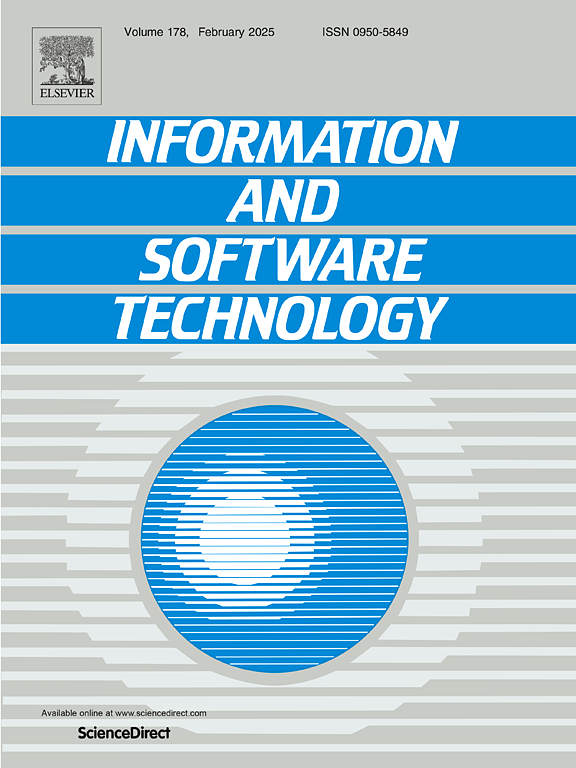DHG-BiGRU: Dual-attention based hierarchical gated BiGRU for software defect prediction
IF 3.8
2区 计算机科学
Q2 COMPUTER SCIENCE, INFORMATION SYSTEMS
引用次数: 0
Abstract
Context:
Software defect prediction (SDP) is a prominent research area focussed on anticipating defects early in the software lifecycle. Traditional machine learning models are based on static features, which are not enough to capture contextual information in the source code. In recent years, researchers have also developed deep learning models that extract semantic information from source code using the abstract syntax tree (AST). These approaches often combine static and semantic features by a simple merger operation.
Objective:
The article aims to address the limitations of the existing models by utilizing advanced feature extraction and integration techniques. It develops a deep learning model that can effectively prioritize the crucial features and intelligently combine the static and semantic features to provide robust predictions
Method:
The article proposes a novel model namely, dual-attention-based hierarchical gated BiGRU (DHG-BiGRU). The model first employs a static feature extractor (StatFE) and a semantic feature extractor (SemFE) to capture static and semantic features, respectively. Next, the outputs from StatFE and SemFE are passed to individual BiGRUs. The BiGRU output associated with the semantic features is subsequently processed by a dual attention mechanism (DAM), that captures the complex semantic information with emphasis on the most crucial features. Afterward, the hierarchical gated fusion (HGF) meticulously merges the static and semantic features. Finally, these integrated features are passed through a sigmoid function to predict defects.
Results:
The extensive experiments on extensively utilized datasets from the PROMISE repository reveal that DHG-BiGRU performs significantly better than the most advanced models and consistently achieves higher precision, recall and f-measure, demonstrating a reliable prediction capability.
Conclusion:
The results of the study underscore the potential advanced feature extraction and integration techniques for SDP. By achieving considerable improvements over state-of-the-art techniques, the proposed approach paves the way for sophisticated defect prediction models to improve software quality and reliability.
求助全文
约1分钟内获得全文
求助全文
来源期刊

Information and Software Technology
工程技术-计算机:软件工程
CiteScore
9.10
自引率
7.70%
发文量
164
审稿时长
9.6 weeks
期刊介绍:
Information and Software Technology is the international archival journal focusing on research and experience that contributes to the improvement of software development practices. The journal''s scope includes methods and techniques to better engineer software and manage its development. Articles submitted for review should have a clear component of software engineering or address ways to improve the engineering and management of software development. Areas covered by the journal include:
• Software management, quality and metrics,
• Software processes,
• Software architecture, modelling, specification, design and programming
• Functional and non-functional software requirements
• Software testing and verification & validation
• Empirical studies of all aspects of engineering and managing software development
Short Communications is a new section dedicated to short papers addressing new ideas, controversial opinions, "Negative" results and much more. Read the Guide for authors for more information.
The journal encourages and welcomes submissions of systematic literature studies (reviews and maps) within the scope of the journal. Information and Software Technology is the premiere outlet for systematic literature studies in software engineering.
 求助内容:
求助内容: 应助结果提醒方式:
应助结果提醒方式:


